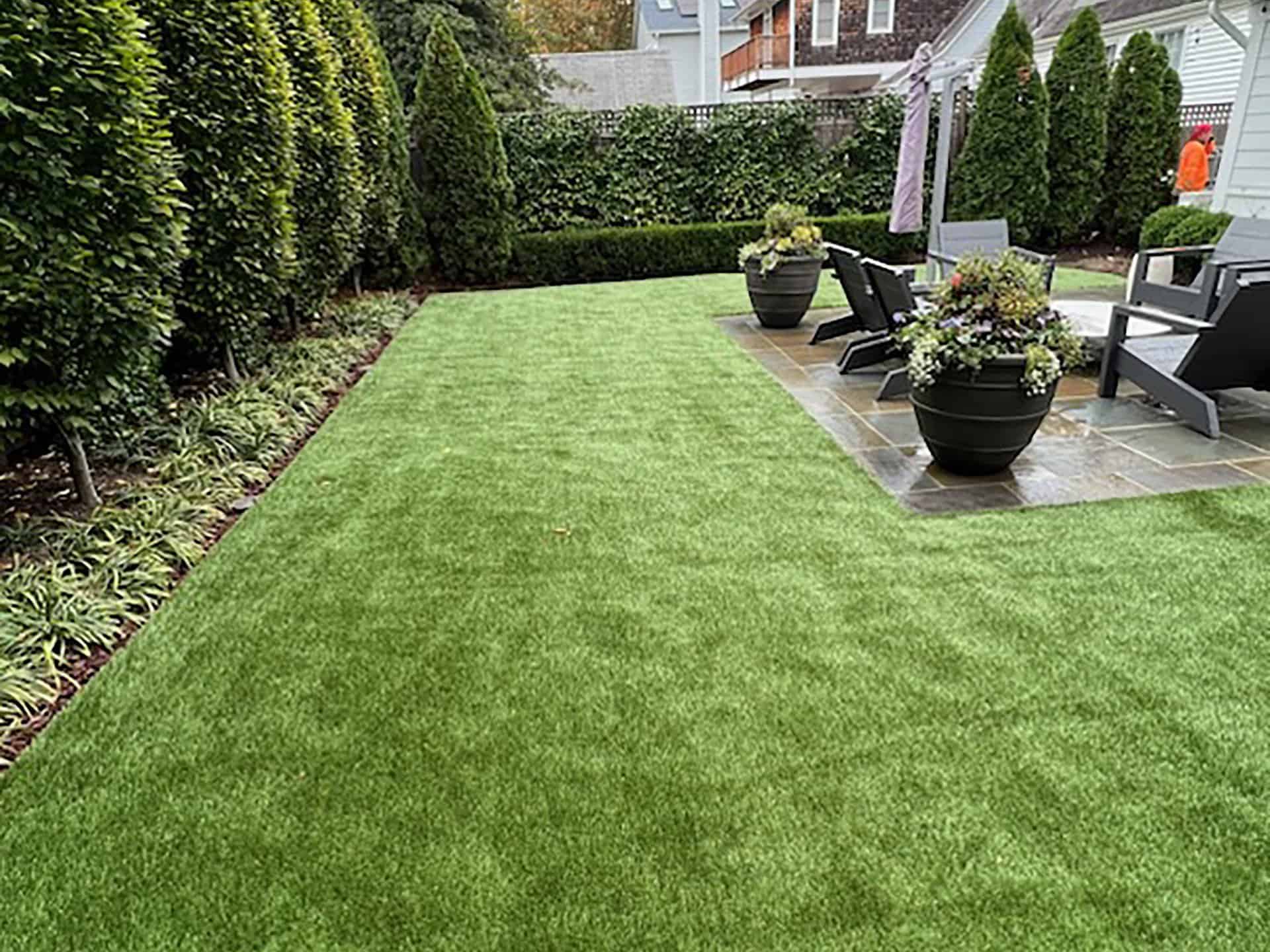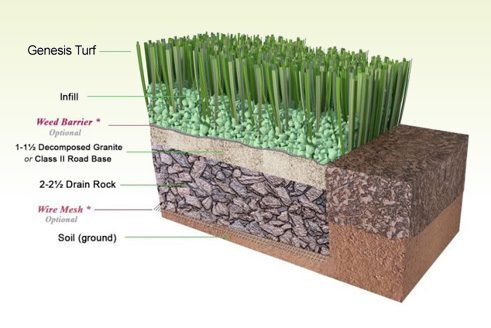See Why Homeowners Prefer Artificial Grass for Lasting Landscaping Practices
As home owners progressively prioritize sustainability in landscaping, fabricated turf has emerged as an engaging option to conventional turf. Its ability to conserve water, lower maintenance initiatives, and decrease ecological effect placements it as a useful option for those seeking environmentally friendly services. The aesthetic appeal and versatility of fabricated grass provide to varied layout preferences. However, the effects of this change extend beyond mere comfort and aesthetics, prompting a better evaluation of just how these options affect more comprehensive ecological results. What stays to be discovered is the complete range of benefits that man-made lawn can provide to property owners and the environment alike.
Water Conservation Perks
Among the most substantial advantages of synthetic grass is its function in water preservation. Traditional turf yards require considerable quantities of water to maintain their lavish appearance, often causing overuse of local water sources, specifically in dry areas. In contrast, synthetic grass eliminates this demand completely, as it does not need watering. This not only conserves water yet also minimizes the stress on local water systems, particularly throughout dry spell conditions.
Additionally, the installment of fabricated lawn can contribute to a more lasting landscape. Homeowners can considerably reduce their water bills, permitting reallocation of resources to various other ecological efforts or family uses. Furthermore, synthetic grass is developed to endure different climatic problems without the demand for supplementary watering, making it a perfect option for regions dealing with water deficiency.
The ecological advantages expand past prompt water financial savings. By decreasing water consumption, man-made grass assists to mitigate the effects of environment change, preserving vital ecosystems that are intimidated by excessive water extraction. As sustainable landscaping methods obtain grip, synthetic grass becomes a responsible choice for homeowners seeking to develop environment-friendly outside spaces.
Minimized Upkeep Efforts
Synthetic lawn significantly lowers maintenance efforts compared to standard lawn yards. With artificial yard, house owners can get rid of the lengthy tasks connected with all-natural landscape design, such as mowing, fertilizing, and weeding. This not only conserves valuable time but likewise lowers physical labor, making lawn care obtainable for individuals of all ages.
Among one of the most notable advantages is the lack of normal mowing. Conventional grass require frequent trimming to preserve a cosmetically pleasing height, whereas synthetic grass remains consistently lush without the requirement for reducing. Furthermore, home owners no more need to apply chemicals or plant foods, which are often needed to keep natural turf healthy. This shift not only lightens the work yet additionally advertises a neater, extra uniform appearance year-round.
In addition, synthetic grass is long lasting and durable, needing minimal upkeep past occasional brushing and rinsing to eliminate debris. This ease of maintenance permits home owners to appreciate their outside spaces without the constant fear of upkeep, offering more time for recreation and family members activities. Ultimately, the reduced upkeep initiatives related to synthetic grass make it an attractive alternative for those looking for a low-maintenance, visually appealing landscape.

Environmental Influence Reduction
There is an expanding recognition of the ecological benefits linked with synthetic lawn, especially in regards to next page water conservation and lowered chemical usage. Typical lawns need significant quantities of water, specifically in drought-prone regions, bring about enhanced pressure on local water resources. In comparison, synthetic lawn eliminates the requirement for watering, dramatically reducing water usage and advertising sustainability.
Furthermore, standard lawn upkeep often includes the application of plant foods, herbicides, and chemicals, which can add to dirt and water air pollution. Synthetic grass mitigates this environmental danger by needing minimal upkeep and practically getting rid of the need for unsafe chemicals. This not just enhances soil health but also safeguards local right here environments from hazardous overflow.
Additionally, the manufacturing of all-natural yard yards normally entails using fossil gas for trimming and landscape design tools, additional adding to greenhouse gas discharges. By picking synthetic grass, home owners can dramatically lower their carbon footprint related to yard care activities.
Aesthetic Appeal and Flexibility
Along with its environmental advantages, synthetic lawn provides substantial aesthetic allure and flexibility for landscape design. Property owners can attain a lush, environment-friendly appearance year-round, getting rid of the seasonal fluctuations frequently associated with natural yard. This constant visual not just improves the visual allure of a residential property however additionally adds to a polished and well-maintained appearance.
Moreover, synthetic grass is readily available in a range of colors, structures, and styles, permitting for personalization to suit individual preferences and layout motifs - Arizona turf. Whether used in property gardens, commercial rooms, or leisure locations, it can seamlessly incorporate into varied landscaping styles, from contemporary minimalist to lush exotic setups
The adaptability of synthetic grass extends beyond plain appearance; it can be installed in numerous areas, including rooftops, patio areas, and even indoor rooms, producing opportunities for unique landscape design options. Additionally, it is suitable for a series of activities, from children's play locations to pet-friendly settings, supplying functionality without endangering design.
Ultimately, the visual allure and convenience of fabricated grass make it an appealing option for property owners seeking sustainable landscape design solutions that do not give up charm for ecological obligation.

Long-Term Cost Financial Savings
Among the most engaging benefits of synthetic turf read this article is its possibility for long-lasting price savings. Unlike all-natural lawn, which needs regular upkeep-- including mowing, watering, feeding, and insect control-- artificial lawn considerably reduces these continuous expenditures. House owners can save a significant amount on water expenses, specifically in regions where water deficiency is a pressing problem. The removal of yard treatment services additionally adds to monetary cost savings, as there is no need for specific tools or labor.
Additionally, synthetic grass has a life-span of 15 to 25 years, relying on its quality and use. This sturdiness lessens substitute prices, making it a much more affordable selection over time. The preliminary investment in artificial turf can frequently be recouped through the financial savings built up over time.
While the ahead of time expense may seem greater contrasted to sod installation, the cumulative financial savings from minimized maintenance and water usage often surpass these preliminary expenditures. Inevitably, the adoption of synthetic turf not just promotes a sustainable landscape design service but additionally uses property owners a financially wise choice that aligns with lasting budgeting goals.
Verdict
Artificial grass arises as an engaging alternative for lasting landscape design, providing substantial benefits in water conservation, minimized maintenance initiatives, and reduced ecological impact. As neighborhoods increasingly focus on environmentally friendly techniques, the adoption of artificial grass stands for a progressive step toward attaining sustainable and resistant landscapes.
In addition, synthetic grass is made to stand up to numerous weather problems without the demand for supplementary watering, making it an optimal option for regions encountering water scarcity. (Arizona artificial turf)

Fabricated grass arises as an engaging choice for sustainable landscape design, supplying substantial benefits in water preservation, reduced maintenance efforts, and lessened ecological influence.